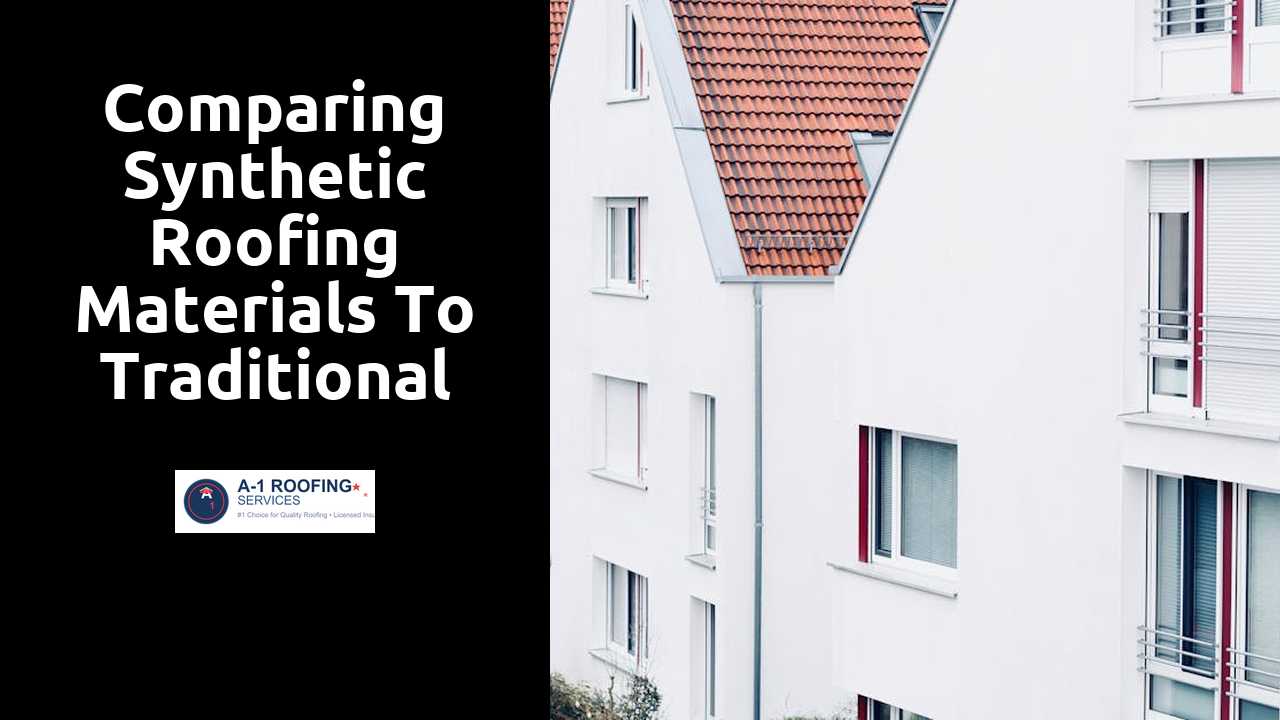
Comparing Synthetic Roofing Materials to Traditional Options
Table Of Contents
Environmental Impact
The production and disposal of roofing materials have significant implications for the environment. Traditional options like asphalt shingles and wood shakes often require the logging of trees and the use of non-renewable resources. Environmental concerns arise from the pollutants released during manufacturing processes and the eventual waste produced when these materials reach the end of their lifespan. In contrast, many synthetic roofing products are designed to be more environmentally friendly, incorporating recycled materials and providing a longer service life, potentially reducing the overall footprint.
However, the environmental benefits of synthetic roofing materials are not without their criticisms. The production of synthetic options can also involve chemical processes that have their own environmental impacts. While synthetic roofs may last longer and require fewer replacements, the longevity must be weighed against the environmental costs of chemicals used in their manufacturing. Both traditional and synthetic materials present unique challenges in terms of sustainability and impact, highlighting the complexity of making an informed choice for environmentally-conscious consumers.
Find out further details by clicking here.
Sustainability of Synthetic vs. Traditional Materials
Synthetic roofing materials often provide an advantage over traditional options in terms of sustainability. Many synthetic products are designed to last longer, reducing the frequency of replacements and the associated waste. Additionally, numerous synthetic roofs utilize recycled materials in their production, which contributes to lower resource consumption and a decrease in landfill contributions over time.
On the other hand, traditional roofing materials like asphalt shingles typically require more frequent repairs and replacements. While some traditional options, such as metal roofing or sustainably harvested wood, can be environmentally friendly, the overall lifecycle of synthetic materials often results in a smaller ecological footprint. Homeowners may find that choosing synthetic materials aligns better with modern sustainability practices, promoting a more eco-friendly approach to construction and home improvement.
Aesthetic Appeal
When it comes to enhancing the visual character of homes, both synthetic and traditional roofing materials offer a range of appealing options. Traditional choices, such as asphalt shingles or clay tiles, often carry a timeless charm and authenticity that many homeowners appreciate. Their natural textures and colors can complement various architectural styles, creating a cohesive look. Conversely, synthetic materials have made significant strides in design and can closely mimic the appearance of more expensive or natural alternatives. These products often come in an extensive palette of shades and styles, allowing homeowners to achieve their desired aesthetic without sacrificing durability.
The versatility of synthetic roofing materials also allows for innovative designs that might not be feasible with traditional options. Manufacturers of synthetic materials often invest in advanced technologies that result in lighter, more adaptable products. This flexibility can enable unique architectural choices, from dramatic slopes to intricate detailing. Traditional roofing systems may limit creativity due to weight and installation constraints. Homeowners today can choose materials that not only suit their personal style but also align with contemporary architectural trends, enhancing the overall exterior appeal of their homes.
Variety of Styles and Designs
Synthetic roofing materials have gained popularity for their impressive versatility in style and design. Manufacturers offer a wide range of options that can mimic the look of traditional materials, such as wood shakes, slate, or tile. Homeowners can select from various colors, textures, and finishes, allowing them to tailor their roofs to match personal preferences and architectural styles. This adaptability gives synthetic materials an edge in catering to diverse aesthetic tastes and neighborhood trends.
Traditional roofing options, while classic in appeal, often come with limitations in design. Common choices like asphalt shingles or clay tiles typically adhere to established patterns that may not excite homeowners looking for something unique. However, there are still countless combinations and styles available, often reflecting regional practices and historical influences. Different designs carry distinct charm, but homeowners seeking a distinctive look may find themselves limited when relying solely on these conventional materials.
Maintenance Requirements
Synthetic roofing materials are often praised for their low maintenance requirements compared to traditional options. Many synthetic products are designed to resist issues such as rot, mold, and insect damage. This durability can lead to fewer repairs over time, making them appealing for homeowners looking for an easier roofing solution. Additionally, synthetic roofs may not require frequent inspections for damage caused by weather or wear.
In contrast, traditional roofing materials often have higher upkeep needs. Options like wood shingles may necessitate regular treatments to prevent decay and insect infestations. Asphalt shingles can lose granules over time, leading to potential leaks, which requires vigilant monitoring and replacement. Metal roofs, while durable, can develop rust without proper maintenance. These factors can contribute to a greater long-term commitment in both time and costs for homeowners opting for conventional materials.
Upkeep for Synthetic vs. Traditional Roofing
Synthetic roofing materials often require less maintenance compared to traditional options. Many synthetic products, such as composite shingles or PVC roofs, offer durability that withstands harsh weather conditions without significant wear. They are typically designed to resist fading, cracking, and other forms of damage, making them a long-term cost-effective choice. Regular inspections may be all that is needed, and occasional cleaning can be accomplished with simple tools or garden hoses.
On the other hand, traditional roofing materials like wood shakes or asphalt shingles typically demand more frequent upkeep. Wood shakes may need to be treated to resist rot and pests, while asphalt shingles can suffer from granule loss over time. Homeowners may find themselves replacing missing or damaged shingles more often, which adds to long-term maintenance costs. Seasonal inspections and repairs are generally necessary to prolong the lifespan of traditional roofs.
Related Links
Evaluating the Longevity of Synthetic Roofing ProductsInstallation Tips for Synthetic Roofs: A Comprehensive Guide